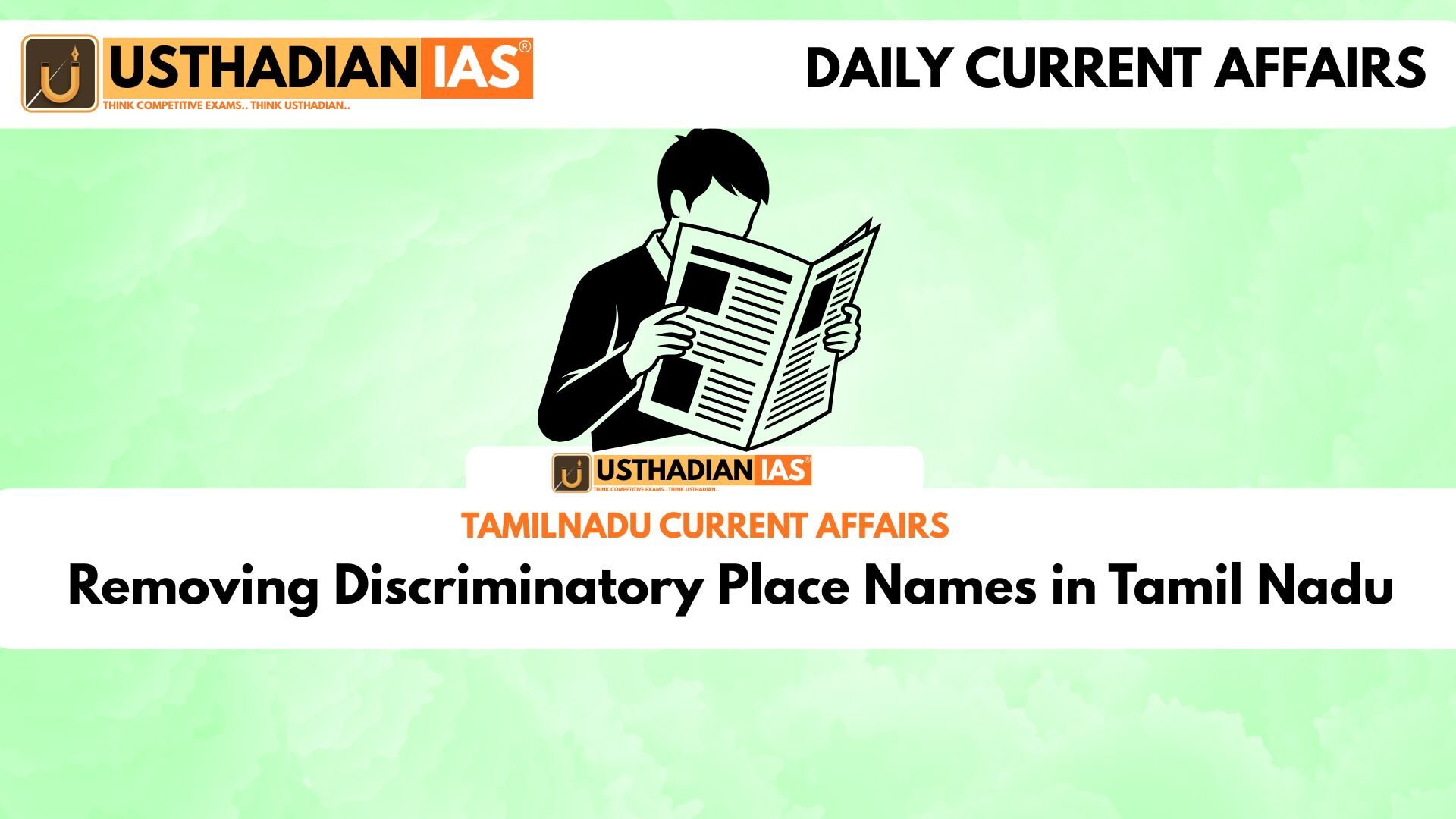Tamil Nadu’s Inclusive Naming Initiative
Removing Discriminatory Place Names in Tamil Nadu: The Tamil Nadu government has taken a progressive step toward social equality by introducing guidelines to identify and rename caste-based or discriminatory place names across the state. This decision aligns with the Chief Minister’s Assembly announcement to remove the word “Colony” from official records, promoting inclusivity in public nomenclature.
Removing Colonial and Caste Markers
The move targets names such as Adidravidar Colony, Harijan Colony, Vannankulam, Parayar Street, and Chakkiliar Salai, which carry caste-based or derogatory connotations. These will be replaced with neutral and community-accepted alternatives, ensuring that public spaces reflect equality and dignity.
Static GK fact: The term Harijan, once popularized by Mahatma Gandhi, is now discouraged by the government and the Scheduled Castes Commission for being patronizing and outdated.
Local Participation in Renaming Process
Under the new policy, the Grama Sabha and Area Sabha will play a central role in approving any name changes. These local bodies must record valid reasons for retaining old names, ensuring transparency and community consensus.
The final approval lies with the State Government, as per the Tamil Nadu Panchayats Act, 1994, and the Tamil Nadu Urban Local Bodies Act, 1998. These laws empower the state to standardize local governance and maintain equity in administrative records.
Static GK Tip: The Grama Sabha represents all registered voters in a village and acts as the foundation of grassroots democracy under the 73rd Constitutional Amendment (1992).
Extending the Policy to Revenue Villages
The Revenue and Disaster Management Department has been instructed to review and remove caste-linked names from revenue villages and administrative records. This ensures consistency across both rural and urban areas, reducing discriminatory references in public documentation.
This step is expected to influence map entries, postal records, land documents, and local signboards, bringing uniformity to government databases.
Promoting Social Harmony
By eradicating caste references from public spaces, Tamil Nadu reinforces its commitment to social justice, a principle embedded in Dravidian ideology and the State’s Constitution-inspired welfare model. The initiative also supports the vision of inclusive governance—where identity, dignity, and equality are protected for every citizen.
Static GK fact: Tamil Nadu was among the first states in India to implement reservations in education and employment for marginalized groups, a model that influenced the national reservation framework.
Static Usthadian Current Affairs Table
Removing Discriminatory Place Names in Tamil Nadu:
| Topic | Detail |
| State | Tamil Nadu |
| Initiative | Renaming caste-based or discriminatory public places |
| Key Objective | Promote equality and social harmony |
| Announced By | Chief Minister of Tamil Nadu |
| Laws Involved | Tamil Nadu Panchayats Act, 1994; Tamil Nadu Urban Local Bodies Act, 1998 |
| Approval Bodies | Grama Sabha and Area Sabha |
| Department Involved | Revenue and Disaster Management Department |
| Examples of Names to be Changed | Adidravidar Colony, Harijan Colony, Parayar Street |
| Governance Theme | Inclusive and non-discriminatory naming policy |
| Broader Impact | Promotes dignity, unity, and anti-caste inclusivity across Tamil Nadu |








